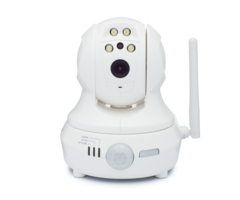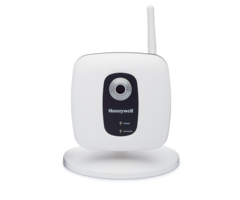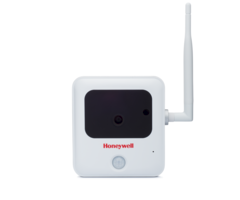NetAXS 123 Web Based Access Control from Honeywell Security
Related Products



Related Categories
Description
Combine Honeywell's incredible access control systems using NetAXS 123, and their incredible web based access control system.
Transcript
Ira Siegel Hi, my name is Ira Siegel with Honeywell Systems Group, and today we're going to be talking about the Net AXS123 Electronic Access Control Panel. Features, such as an internal web browser, USB, TC/PIP and RS45 communications, as well as power over Ethernet capabilities and a modular design, provide for a simple installation, and an easy system to use and operate. We're going to begin by talking about our enclosure. Our compact enclosure provides us with the ability to hold a single board. The enclosure itself gives us the capabilities of communicating with one reader and one door. The enclosure itself has the ability to communicate via USB or TC/PIP. The board also has the ability to use power over Ethernet, or an auxiliary 12- volt DC power source. The terminals on the board themselves have the ability to provide direct power, RS485 communications to other boards downstream, and to monitor the panel tamper or the enclosure tamper itself. The board also has the ability to control two output relay devices, whether the devices be door locks, or any other any other type of output relay. We've got the capabilities of providing, either a normally open or a normally closed circuit. The terminals are also wedded so we have the ability to provide direct 12-volts DC voltage at the terminals, preventing the need for running additional wires. We've also got the ability to have input points, whether it be a request to exit, or a door position switch, and we've got the ability to tie in either a five-wire or a six-wire reader. We can take advantage of the tamper by using a 6-wire, and that reader has the ability to communicate back to the panel, and tie a single door back to the panel to provide access at that door. The board also has a single set of dip switches. Those dip switches give us the ability to individually program these boards with a separate address, as well as set, either a permanent IP address, or a user-assigned IP address. The board also has the ability to determine whether we're going to be using normally open or normally closed contacts, each individually depending upon the output relay that we're going to be using, as well as to determine whether we are going to be using the auxiliary power source for power, or if we're going to be providing the power through our self-wedded context, directly through the power source provided for the panel itself. The panel also has an internal tamper switch. That tamper switch provides us with the ability to monitor the enclosure cover, as well as if the whole enclosure is removed from the wall. The compact enclosure gives us the ability to protect one door with one reader. If we need to go beyond one door, we need multiple readers we can go to the standard enclosure. The standard enclosure gives us the ability to have one door, two doors, or three doors that can be protected, all in the single enclosure. The standard enclosure comes with a 4AMP hour power supply. That 4AMP hour power supply is connected directly to an AC receptacle, which can then be plugged directly into a wall outlet. In addition, the enclosure has a standard tamper switch. That tamper switch will provide us with the ability to know if somebody has opened up the cabinet or not. The board itself gets mounted directly in the enclosure, just like the standard board got mounted in the compact enclosure. In addition, we've also got a 7AMP hour battery that compactly fits in the bottom of the enclosure. The NET AXS panel, by default, is a one-door system. However, we can take the NXD1 device, and we can add this board directly onto the NET AXS panel. By taking this board and adding it on to a powered down NET AXS123 panel, once we power back up the NET AXS123 panel, we've now got a 2-door system. Once the board is mounted in place, the next thing we're going to do is attach the thumb screws. With the thumb screws tightened, the next thing we need to do is power back up our panel. Once we power up our panel, the NET AXS123 now has two readers assigned to it. The reader board itself the NXD1, has the same exact terminal switches, as we had built into our regular board. These terminals give us the capabilities of automatically tying in a reader, two output relays, as well as the door position switch, and the request to exit. The power for output relays is provided directly from our 4-amp hour power supply built into our panel. In addition to the NXD1, if we want to add two additional doors, instead of one additional door, we can add the NDX2 board to the NET AXS123 panel. That gives us the capabilities of having a total of three readers on a single panel. The NDX2 uses all of the same terminals, and all of the same dip switch settings as the NDX1, as well as the NET AXS123 board. Features such as the internal web browser, USB, TC/PIP, and RS-45 communications, as well as power over Ethernet capabilities in a modular design, to allow us to go from one, two, or three doors make the NET AXS123 an easy system to install and a simple system to operate.
- Uploaded
- Duration:
